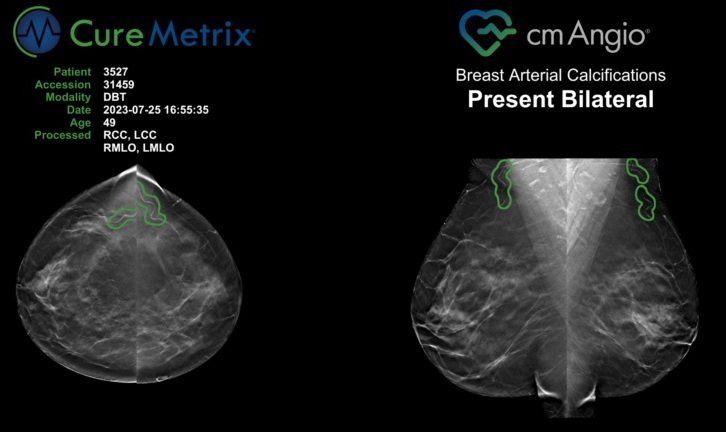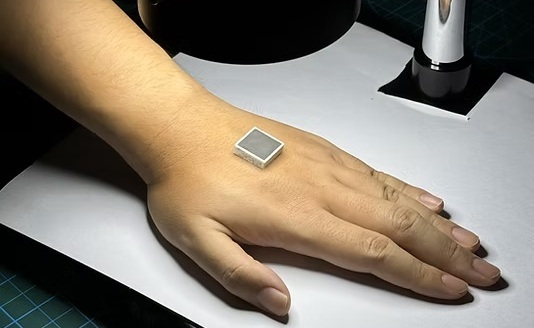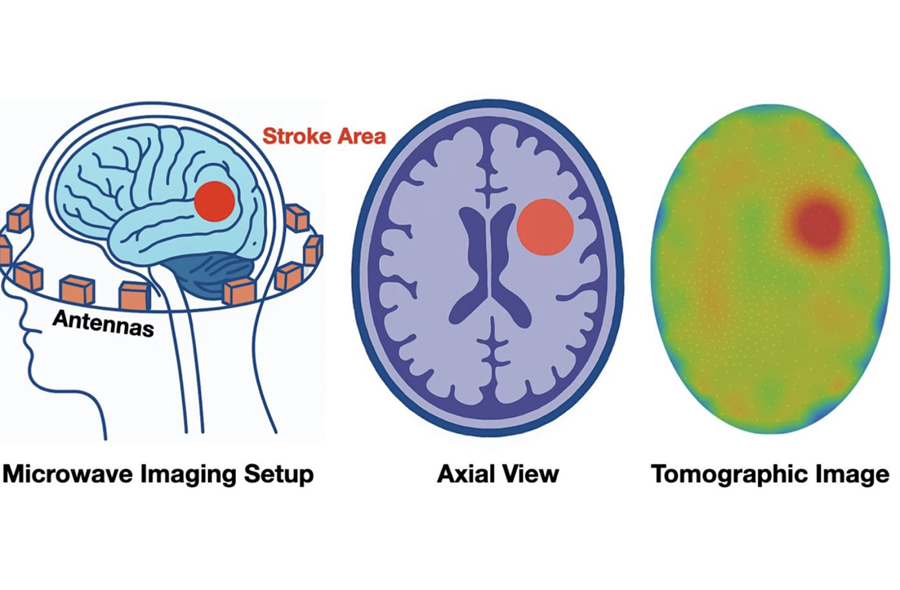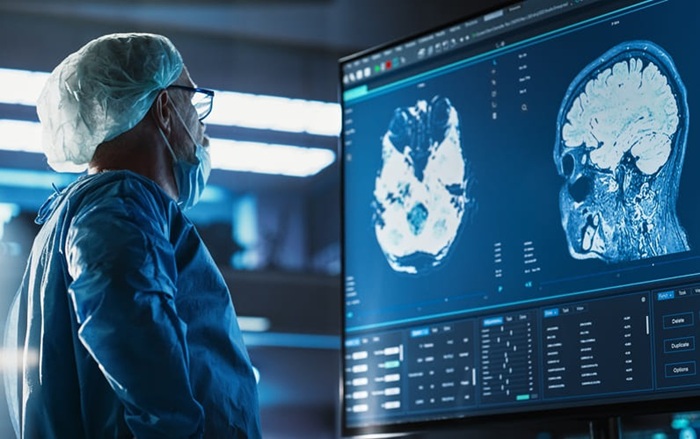MRI Reveals COVID-19 Related Ocular Abnormalities
|
By MedImaging International staff writers Posted on 04 Mar 2021 |

Image: Ocular MRI finding in a COVID-19 patient, including hyperintense nodules (A) and retinal detachment (B) (Photo courtesy of FOR)
A magnetic resonance imaging (MRI) study found significant abnormalities in the eyes of some people with severe COVID-19.
Researchers at Rothschild Foundation Hospital (FOR; Paris, France), CHU de Strasbourg (France), and other institutions conducted a retrospective observational study that included 129 patients with severe COVID-19 who also underwent brain MRI. In all, nine (7%) of the patients had one (or several) fluid-attenuated inversion recovery (FLAIR) hyperintense nodules of the posterior pole of the globe, were isointense on T1 scans, and showed no enhancement after gadolinium injection. All patients had nodules in the macular region, eight had bilateral nodules, and two had nodules outside the macular region.
The mechanism behind the nodule formation remains unknown, according to the researchers, although it could be related to inflammation triggered by the SARS-CoV-2 virus. Inadequate drainage of the veins of the eyes, a problem found in patients who spend time in the ICU in the prone position or intubated, may also be a factor, and seven of the nine patients with eye abnormalities on MRI had been placed in a prone position in the intensive care unit (ICU) for an extended period of time. The study was published on February 13, 2021, in Radiology.
“The results suggest that screening should be considered in all patients with severe COVID-19 to detect these nodules. In clinical practice, this screening could include dedicated exploration of the eyes with high-resolution MRI,” concluded lead author Augustin Lecler, MD, PhD, of FOR, and colleagues. “Our study advocates for screening of all patients hospitalized in the ICU for severe COVID-19. We believe those patients should receive specific eye-protective treatments.”
SARS-Cov-2 is known to target the angiotensin-converting enzyme-related carboxypeptidase (ACE2) receptor, which is largely expressed in the retina and the choroid. As ACE2 is the primary enzyme of the vasoprotective axis of the renin–angiotensin system in the retina, its downregulation might induce the development of retinal ischemia. Another possible hypothesis is a Valsalva retinopathy secondary to orbital proptosis, which can occur when the ocular venous system is affected by the increased central venous pressure, leading to an inadequate ocular venous drainage.
Related Links:
Rothschild Foundation Hospital
CHU de Strasbourg
Researchers at Rothschild Foundation Hospital (FOR; Paris, France), CHU de Strasbourg (France), and other institutions conducted a retrospective observational study that included 129 patients with severe COVID-19 who also underwent brain MRI. In all, nine (7%) of the patients had one (or several) fluid-attenuated inversion recovery (FLAIR) hyperintense nodules of the posterior pole of the globe, were isointense on T1 scans, and showed no enhancement after gadolinium injection. All patients had nodules in the macular region, eight had bilateral nodules, and two had nodules outside the macular region.
The mechanism behind the nodule formation remains unknown, according to the researchers, although it could be related to inflammation triggered by the SARS-CoV-2 virus. Inadequate drainage of the veins of the eyes, a problem found in patients who spend time in the ICU in the prone position or intubated, may also be a factor, and seven of the nine patients with eye abnormalities on MRI had been placed in a prone position in the intensive care unit (ICU) for an extended period of time. The study was published on February 13, 2021, in Radiology.
“The results suggest that screening should be considered in all patients with severe COVID-19 to detect these nodules. In clinical practice, this screening could include dedicated exploration of the eyes with high-resolution MRI,” concluded lead author Augustin Lecler, MD, PhD, of FOR, and colleagues. “Our study advocates for screening of all patients hospitalized in the ICU for severe COVID-19. We believe those patients should receive specific eye-protective treatments.”
SARS-Cov-2 is known to target the angiotensin-converting enzyme-related carboxypeptidase (ACE2) receptor, which is largely expressed in the retina and the choroid. As ACE2 is the primary enzyme of the vasoprotective axis of the renin–angiotensin system in the retina, its downregulation might induce the development of retinal ischemia. Another possible hypothesis is a Valsalva retinopathy secondary to orbital proptosis, which can occur when the ocular venous system is affected by the increased central venous pressure, leading to an inadequate ocular venous drainage.
Related Links:
Rothschild Foundation Hospital
CHU de Strasbourg
Latest MRI News
- Novel Imaging Approach to Improve Treatment for Spinal Cord Injuries
- AI-Assisted Model Enhances MRI Heart Scans
- AI Model Outperforms Doctors at Identifying Patients Most At-Risk of Cardiac Arrest
- New MRI Technique Reveals Hidden Heart Issues
- Shorter MRI Exam Effectively Detects Cancer in Dense Breasts
- MRI to Replace Painful Spinal Tap for Faster MS Diagnosis
- MRI Scans Can Identify Cardiovascular Disease Ten Years in Advance
- Simple Brain Scan Diagnoses Parkinson's Disease Years Before It Becomes Untreatable
- Cutting-Edge MRI Technology to Revolutionize Diagnosis of Common Heart Problem
- New MRI Technique Reveals True Heart Age to Prevent Attacks and Strokes
- AI Tool Predicts Relapse of Pediatric Brain Cancer from Brain MRI Scans
- AI Tool Tracks Effectiveness of Multiple Sclerosis Treatments Using Brain MRI Scans
- Ultra-Powerful MRI Scans Enable Life-Changing Surgery in Treatment-Resistant Epileptic Patients
- AI-Powered MRI Technology Improves Parkinson’s Diagnoses
- Biparametric MRI Combined with AI Enhances Detection of Clinically Significant Prostate Cancer
- First-Of-Its-Kind AI-Driven Brain Imaging Platform to Better Guide Stroke Treatment Options
Channels
Radiography
view channel
Routine Mammograms Could Predict Future Cardiovascular Disease in Women
Mammograms are widely used to screen for breast cancer, but they may also contain overlooked clues about cardiovascular health. Calcium deposits in the arteries of the breast signal stiffening blood vessels,... Read more
AI Detects Early Signs of Aging from Chest X-Rays
Chronological age does not always reflect how fast the body is truly aging, and current biological age tests often rely on DNA-based markers that may miss early organ-level decline. Detecting subtle, age-related... Read moreUltrasound
view channel
Wearable Ultrasound Imaging System to Enable Real-Time Disease Monitoring
Chronic conditions such as hypertension and heart failure require close monitoring, yet today’s ultrasound imaging is largely confined to hospitals and short, episodic scans. This reactive model limits... Read more
Ultrasound Technique Visualizes Deep Blood Vessels in 3D Without Contrast Agents
Producing clear 3D images of deep blood vessels has long been difficult without relying on contrast agents, CT scans, or MRI. Standard ultrasound typically provides only 2D cross-sections, limiting clinicians’... Read moreNuclear Medicine
view channel
PET Imaging of Inflammation Predicts Recovery and Guides Therapy After Heart Attack
Acute myocardial infarction can trigger lasting heart damage, yet clinicians still lack reliable tools to identify which patients will regain function and which may develop heart failure.... Read more
Radiotheranostic Approach Detects, Kills and Reprograms Aggressive Cancers
Aggressive cancers such as osteosarcoma and glioblastoma often resist standard therapies, thrive in hostile tumor environments, and recur despite surgery, radiation, or chemotherapy. These tumors also... Read more
New Imaging Solution Improves Survival for Patients with Recurring Prostate Cancer
Detecting recurrent prostate cancer remains one of the most difficult challenges in oncology, as standard imaging methods such as bone scans and CT scans often fail to accurately locate small or early-stage tumors.... Read moreGeneral/Advanced Imaging
view channel
AI-Based Tool Accelerates Detection of Kidney Cancer
Diagnosing kidney cancer depends on computed tomography scans, often using contrast agents to reveal abnormalities in kidney structure. Tumors are not always searched for deliberately, as many scans are... Read more
New Algorithm Dramatically Speeds Up Stroke Detection Scans
When patients arrive at emergency rooms with stroke symptoms, clinicians must rapidly determine whether the cause is a blood clot or a brain bleed, as treatment decisions depend on this distinction.... Read moreImaging IT
view channel
New Google Cloud Medical Imaging Suite Makes Imaging Healthcare Data More Accessible
Medical imaging is a critical tool used to diagnose patients, and there are billions of medical images scanned globally each year. Imaging data accounts for about 90% of all healthcare data1 and, until... Read more
Global AI in Medical Diagnostics Market to Be Driven by Demand for Image Recognition in Radiology
The global artificial intelligence (AI) in medical diagnostics market is expanding with early disease detection being one of its key applications and image recognition becoming a compelling consumer proposition... Read moreIndustry News
view channel
GE HealthCare and NVIDIA Collaboration to Reimagine Diagnostic Imaging
GE HealthCare (Chicago, IL, USA) has entered into a collaboration with NVIDIA (Santa Clara, CA, USA), expanding the existing relationship between the two companies to focus on pioneering innovation in... Read more
Patient-Specific 3D-Printed Phantoms Transform CT Imaging
New research has highlighted how anatomically precise, patient-specific 3D-printed phantoms are proving to be scalable, cost-effective, and efficient tools in the development of new CT scan algorithms... Read more
Siemens and Sectra Collaborate on Enhancing Radiology Workflows
Siemens Healthineers (Forchheim, Germany) and Sectra (Linköping, Sweden) have entered into a collaboration aimed at enhancing radiologists' diagnostic capabilities and, in turn, improving patient care... Read more










 Guided Devices.jpg)









